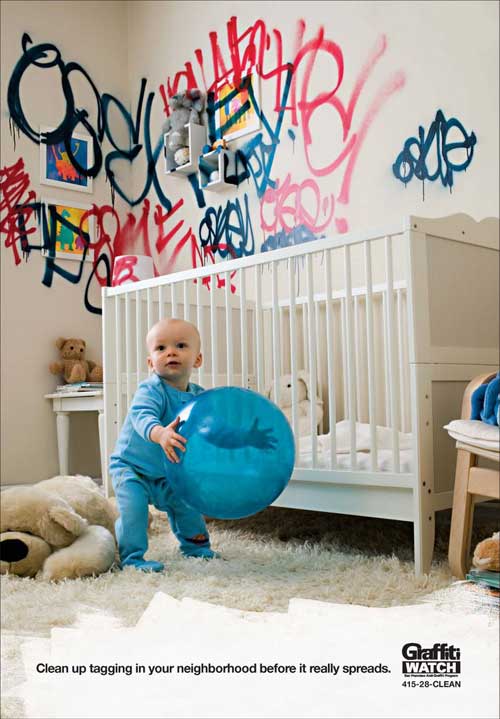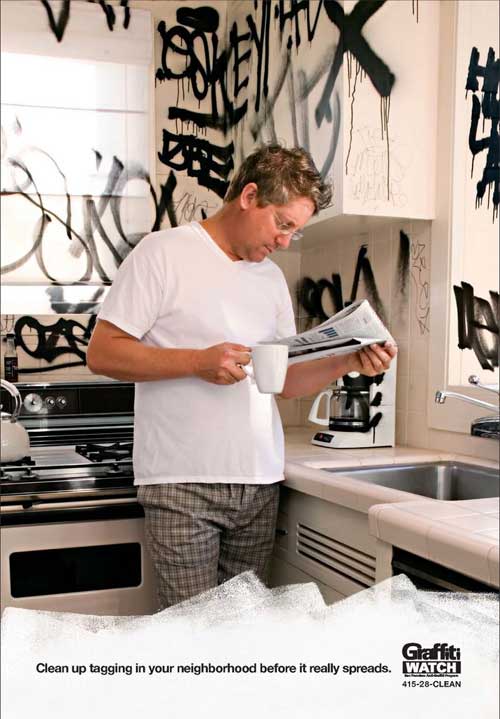The 'opposition' manifests in a bit more subtle ways than traditionalist attacks on same-sex marriage or progressive assertions on evolution. It comes in the form of anti-graffiti legislation like that enacted in the 1990s in the state of New York, Giuliani's "Anti Graffiti Task Force," for instance. Ed Koch's anti-graffiti stance was all-out, complete with huge public relations campaigns vilifying taggers and writers for any and all violations. A veritable white-washing of subway cars took place, again cracking down on the notion of "quality of life crimes."

Anti-graffiti ad, courtesy of the Wooster Collective
When I look at an ad like that, I start to see a little bit of what makes people so angry about street art and graffiti. I think that the line between art and offense is often blurred (even by the stuff that makes it into galleries, for sure - Thomas Kinkade, anyone?) and that which is beautiful to me is extremely offensive to others. It's exactly like the debate over Robert Mapplethorpe. When I look at a building with one side covered in a mural covered in another mural covered in about a million tags, I see a beautiful expression of a multitude of opinions and messages about just as many subjects. Someone else sees a big mess, an eyesore, a crime against their quality of life. In the documentary "Style Wars," MTA morning commuters are shown in utter despair over having to face the day on a subway car coated in spray paint.
This is reasonable and pretty much the only platform where I can understand the upset over street art and graffiti. That doesn't mean that I believe that heavy legislation banning it is necessary, as I see graffiti as a thing of human nature that will not be stopped by a law saying it should be (indeed, that has historically pushed it further). Like the line between art and offense, the line between public and private is often blurred in urban space. Is the side of an apartment building the property of the owner or the property of the community, when it comes to its visual presence? What about a garage door? An SUV? A dumpster or a stop sign? The beauty of street art is that it happens on the streets, anywhere it can. But what about when it happens on something that technically belongs to someone else? I've met several angry folks who are bothered with the tagging on their mailboxes, front doors, hallways and more. And they are justified, without a doubt.

These ads speak to the part of me that doesn't need much challenging to get behind the opposition's view. They show a natural progression of tagging as if it were really going to wind up in my kitchen or living room, as if public space had run out and the next step was private. This approach taps into at just the right belief in personal property thats truly an undercurrent in public society. My belief in public space being a soapbox for all in reality only goes so far. I would probably have a hard time if someone tagged my car or house. While I was living in Berlin, there was a tacit no-holds-barred policy on graffiti and the interior of most apartment buildings in East Berlin were a constant barrage of spray paint. As a guest in these buildings and even the city itself, it was something I could marvel at. But I only can imagine how long that would last, before I would start to feel like my personal space had been treaded upon. Before it started to feel like too much.
No comments:
Post a Comment